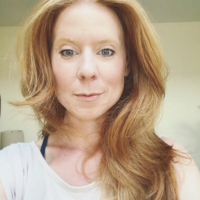
Karma is such a loaded word.
This ancient Sanskrit word is often used incorrectly as a reminder that you will either be punished or rewarded by your actions. The reality is that karma just means action- neither positive nor negative. Every action, however, does have a reaction, a result.
I remember my guru, Maharishi Mahesh Yogi, saying that “No one knows the ways of karma. No one.”
This was a very bold statement coming from such an enlightened man!! As a jyotishi, someone who studies karma, this is an especially intriguing and thought provoking statement for me to contemplate.
Jyotish is in fact the study of karma and it intimately involves looking at the results of one’s previous actions. Your jyotish chart is a map of your karmas at the time of your birth. All the actions that were incurred from previous life times that led you to the moment when life force, prana, brought you to life.
I think of karma like luggage. Your bags are packed and they come with you on this journey through life and death. Some bags get unpacked, some do not. Some may get partially unpacked or re-packed. We all are carrying luggage and must work creatively with what we have brought with us. How you work with the contents of your karmic bags will determine the results and outcomes you receive.
Can we change our Karma, the contents of our suitcases?
There are karmas that can be changed and karmas that can not be changed—no matter how hard we try. Karmas are created just being alive, in a human form. Complexity arrives with our pre-determined karmas vs. our personal choice—karmas that we are creating right now. This is where the debate comes up about how much choice we actually have in changing our lives.
The Four Types of Karmas:
Samchita karmas are accumulated actions. They are dense, collective, and the sum total of all our past actions. These past actions are a very fundamental factor that determines your incarnation.
Prarabdha karmas are those actions we’ve undertaken in this life time by being born. They determine the type of birth we will experience in this life time and what we’ve incurred karmically from our previous births, as well as the family karmas we’ve taken on. This is the karma that is packed into our suitcase. The Prarabdha karmas effect all aspects of our current incarnation and even the birth process it self.
Your jyotish chart shows these karmas very clearly. The jyotish chart tells what actions have been incurred thus far and the possible ways they will ripen in this life time—for better or worse.
Kriyamana karmas are based on our choices in the present life. These karmas plant the seeds for the future and the results that will come to us as a result. We are influenced greatly by our previous actions—which effect our current choices—however, with diligence, willingness and determination, we can make life changes through Kriyamana karmas.
This is where the debate of free will begins. How much choice do we actually have to change our lives when so much is actually pre-determined?
Agama karmas are those actions which are coming or approaching us. These karmas are created by our desires (expressed through Rahu). Desire is why we have incarnated into a human form on the Earth plane, into this lila, or play of life. It is a vital part of our existence, our creativity and manifestation process. The mind (imaginal body) creates from our desires while other influences support or negate these desires.
The Agama karma’s will cycle back into future karma’s for this life and life times to come. This is where we must work very consciously. It is also why jyotish is so importing for creating self awareness. Using one’s jyotish chart to time life events, manage our desires, find “best practice” for our efforts and even temper our desires, can help us bring more consciousness to our karmas. Using Vedic wisdom, meditation and specific healing modalities, we can start to make more conscious choices and action steps.
Samchita and Prarabdha karmas can not be changed. They are actions that have already occurred and have set us up for our current life time. However, working very diligently with Kriyamana and Agama karmas can greatly effect our future karmas. Diligence and willingness (often determined by the Samchita and Prarabdha karmas) are vital for making life changes that will effect our future karmas. These choices can create new patterns for ourselves that will bear fruits in this life time and future life times.
But it’s not quite that simple.
Karmas also have levels of intensity based on how strongly they are gripping us. There are three levels or strengths that determine how easily a karma can be changed or moved. These karmic strengths can also be determined by studying one’s jyotish chart.
Drdha karmas are very strong and solid. Their grip is tight, closed and fixed. The Buddha called Drdha karmas “written in stone.”
Some karmas are not as fixed or firm. These karmas are Drdha-Adrdha Karmas. These karmas are not as solid and they express the middle range of intensity. With effort, determination and conscious action steps, these karmas can be shifted and changed.
Adrdha karmas are easily changed. Through conscious choices, life changes, remedial measures and positive action steps, these karmas can be more easily shifted and transformed. The Buddha referred to these karmas as “written in sand.”
In one’s jyotish chart, one’s karmic life map, the intensity of your karmas can be assessed and determined.
Four factors are necessary to analyze one’s karmas—the houses and the house lords as well as the karaka (indication) of the house itself. Finally, the house arudha (visible, tangible, externalized significations of the house) is a determining factor in karmic results. Additionally, fixed signs show karmas that are more drdha, dual signs offer more drdha-adrdha and moveable signs offer more adrdha results.
Are you ready to unlock the mystery of your karmas?
The simple reality that every action has a reaction can not be disputed. It’s the results of our actions that can be difficult to determine though. There are millions of possible responses with every action that is taken, so how can we be sure we will have more positive outcomes?
I remind my clients to be clear on their intentions. What is your intended result for your action steps? What type of response do you hope for? Use your intention as a tuning fork and keep aligning your actions to it.
Then, notice where you feel this intention in your body. What impact does it have on your physical being? The body is the ultimate tuning fork, which can help us align with our highest potential. The messages of the body can help you determine if an action is going to have positive or negative effects on your life and overall well being. The physical (and emotional) bodies are intimately linked to our intuitive capabilities, our inner knowing. This is one of the main reasons I use embodiment resources in conjunction with the wisdom of jyotish.
Studying your jyotish chart is the most powerful tool for unlocking the mysteries of your karmas. Using your karmic life map to deepen your understanding of why you were born and what you are here to accomplish is invaluable. In fact, I believe the resource of jyotish is without a doubt the most powerful resource available for personal development and growth.
I don’t want you to take my word for it though. I want you to discover this for yourself.
This is why I am so passionate about sharing my weekly Jyotish Basics Classes with you! My classes help you unlock the wisdom of your personal jyotish chart and discover your unique gifts and life purpose. Learn to understand your jyotish chart so you can determine your strengths and your weaknesses, your greatest challenges and also your most essential resources.
There is no other tool of self-awareness more powerful than the wisdom of the jyotish chart!
Are you ready to unravel the mysteries of your karmas?
Please join me for my weekly Jyotish Basics Classes. May registration is now open, but only until April 29th. Sign up early to receive my Early Bird pricing as well as a free copy of your jyotish chart. Sign Up Now.
Relephant:
3 Clues that We Need New Boundaries.
Author: Saraswati J.
Editor: Renée Picard
Photo: via the author











Read 0 comments and reply